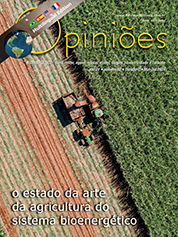José Guilherme Ambrosio Nogueira
Presidente da Orplana
OpAA80
O futuro da agricultura sustentável: tecnologia e mão de obra
O setor sucroenergético desempenha um papel crucial na economia global, fornecendo alimento e energia. No entanto, um dos principais desafios enfrentados pelos produtores e fornecedores de cana tem sido a mão de obra nas propriedades. As etapas de manejo dos canaviais, em grande parte, são historicamente intensivas em mão de obra. Em todo processo produtivo, as questões relacionadas à qualidade do trabalho são o objeto de atenção plena dos produtores.
Desde o plantio, manejo de pragas ou mesmo gestão administrativa, todas essas etapas dependem de pessoas. Neste contexto, o desenvolvimento de tecnologias para melhoria do trabalho no campo deve ser foco do setor e de investimentos do governo. Há vários anos, a colheita mecanizada mostrou esse caminho, entretanto, temos muito a fazer em outras atividades relacionadas à cultura. O plantio mecanizado, por exemplo, após regressão em 2017/2018 por problemas operacionais e desempenhos ruins, tem voltado a ser adotado largamente pelos produtores e melhorado a cada dia. Entretanto, muitos desafios persistem para impulsionar a atividade.
A dificuldade operacional, o alto uso de mudas, os impactos na brotação e a baixa qualidade nas operações têm sido barreiras técnicas para avançarmos nessa transformação. Uma atividade incorreta ou com baixa qualidade atinge diretamente a produtividade e estabelecimento de todo o canavial para os próximos 5 anos. Se não bastasse isso, áreascom relevo acidentado têm sido também um grande desafio para a atividade.
Máquinas plantadeiras automatizadas poderiam aumentar significativamente a eficiência do plantio, reduzindo a necessidade de mão de obra manual e aumentando a precisão e uniformidade da semeadura. Entretanto, para caminharmos em um mundo robotizado e substituir tarefas repetitivas por máquinas, precisamos de um ambiente de desenvolvimento de tecnologia no Brasil, para isso acontecer.
É necessário investir em diversas áreas. Uma delas é o desenvolvimento de programas de robotização no campo, veículos autônomos e tecnologia de ponta. Após isso, capacitação e treinamento que abordem não apenas as técnicas agrícolas, mas também aspectos como segurança no trabalho, uso adequado de equipamentos e boas práticas agrícolas. Não somente o setor sucroenergético, mas todos os setores da agricultura sofrem com isso.
Tem-se avançado muito em tecnologias digitais para controle de operações e gestão de dados, mas em hardware, as pesquisas de tecnologia no campo, são realizadas diretamente dentro das empresas e muitas vezes demoram a chegar ao campo ou, quando chegam, necessitam de muitos ajustes.
Essas tecnologias podem ajudar os produtores a otimizar o uso de insumos, reduzir o desperdício e aumentar a produtividade, ao mesmo tempo em que proporcionam uma melhor qualidade de vida para os trabalhadores. Não somente no plantio de cana, mas em toda atividade. Sem uma diretriz e investimentos vultuosos nesse sentido, certamente adotaremos o que for realizado em pesquisas em outros países de clima temperado, como EUA, Alemanha, Japão ou mesmo Itália, pagando mais e necessitando dos mesmos ajustes.
O desenvolvimento de tecnologias para melhoria no plantio mecanizado e a utilização de mão de obra são fundamentais para impulsionar a sustentabilidade e competitividade do setor sucroenergético. Ao investir em inovação e capacitação, os produtores podem não apenas reduzir os custos operacionais e aumentar a eficiência, mas também promover o desenvolvimento econômico e social das áreas rurais. Assim, a agricultura do futuro será mais sustentável, eficiente e inclusiva, beneficiando tanto os produtores quanto a sociedade como um todo.




